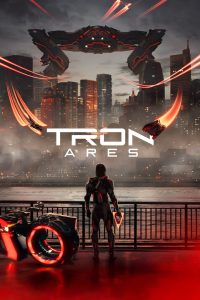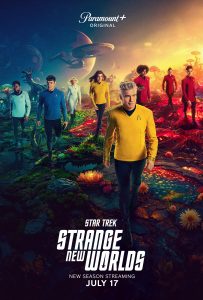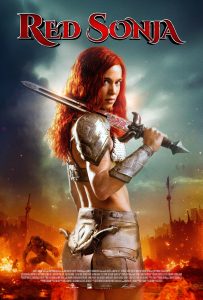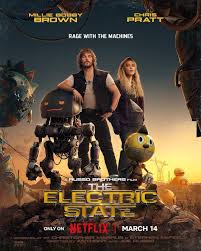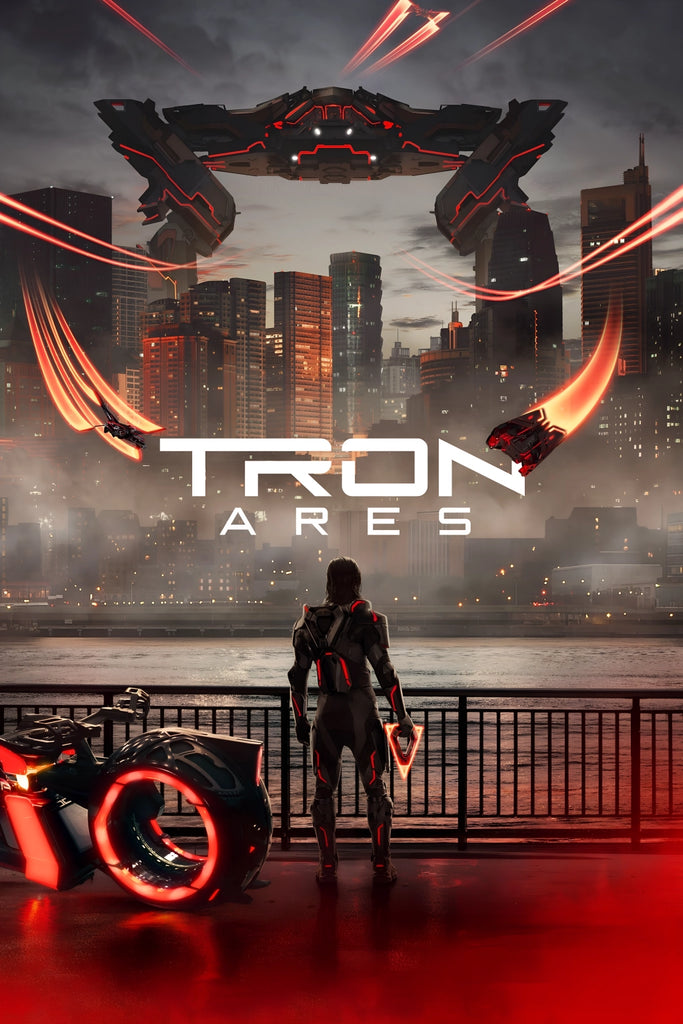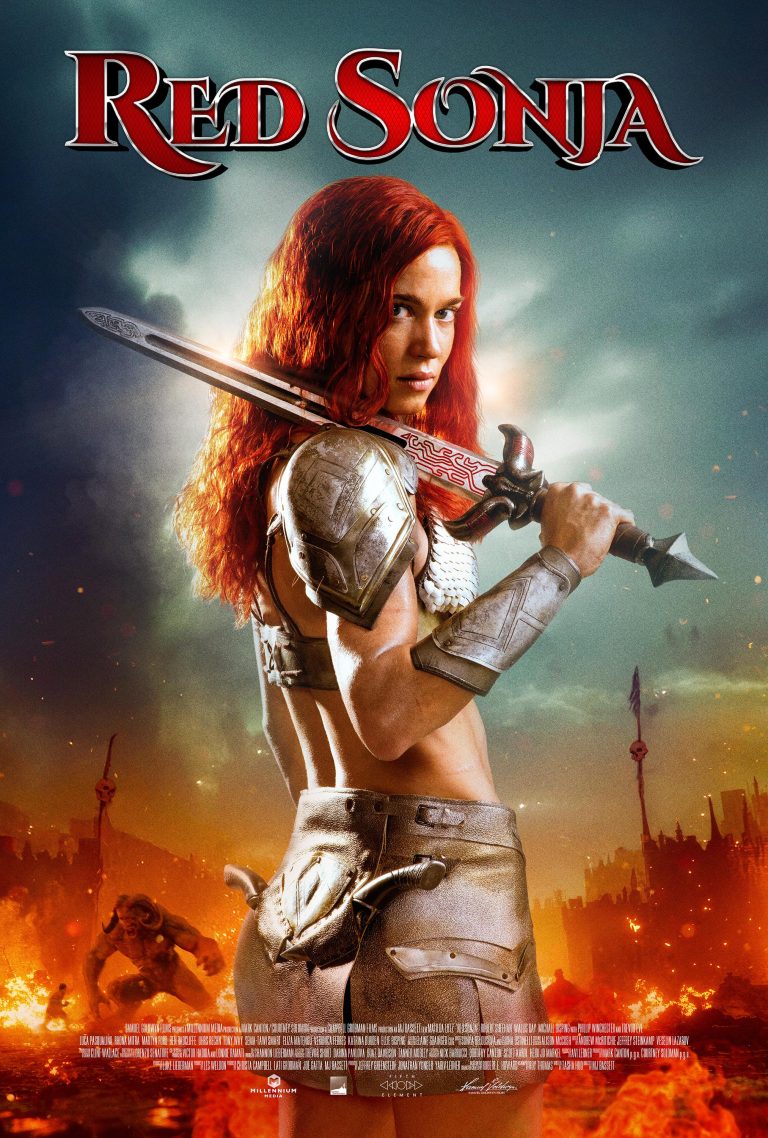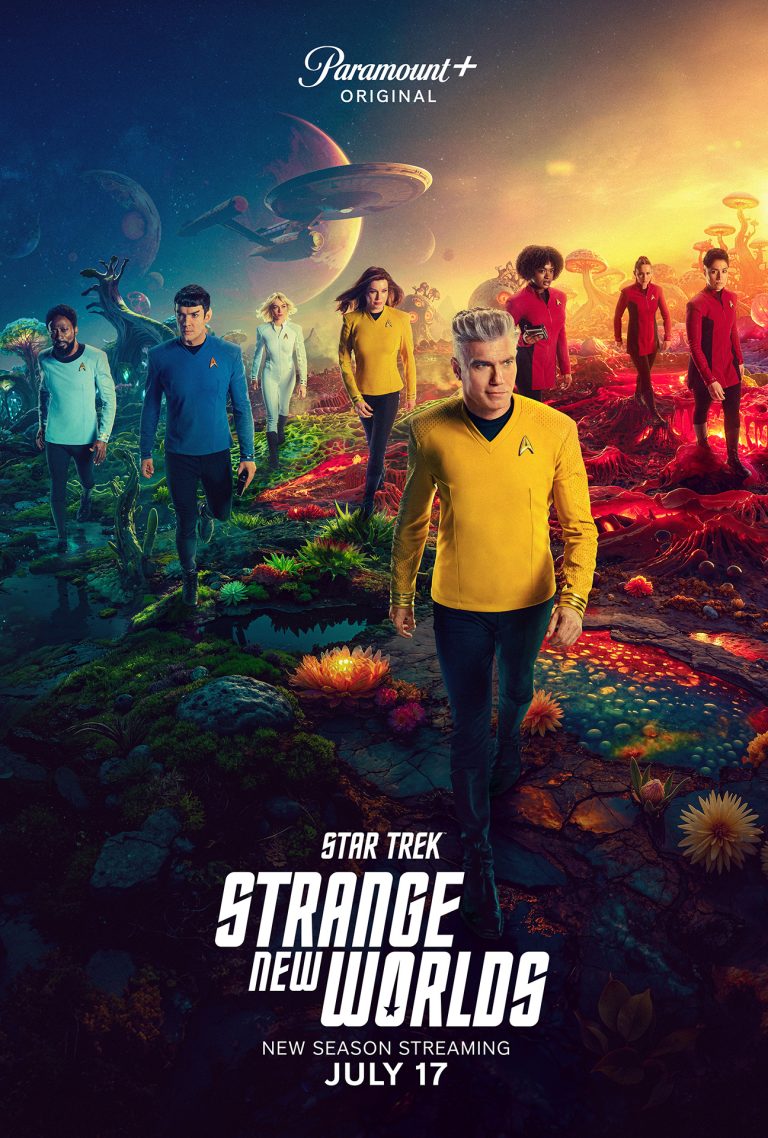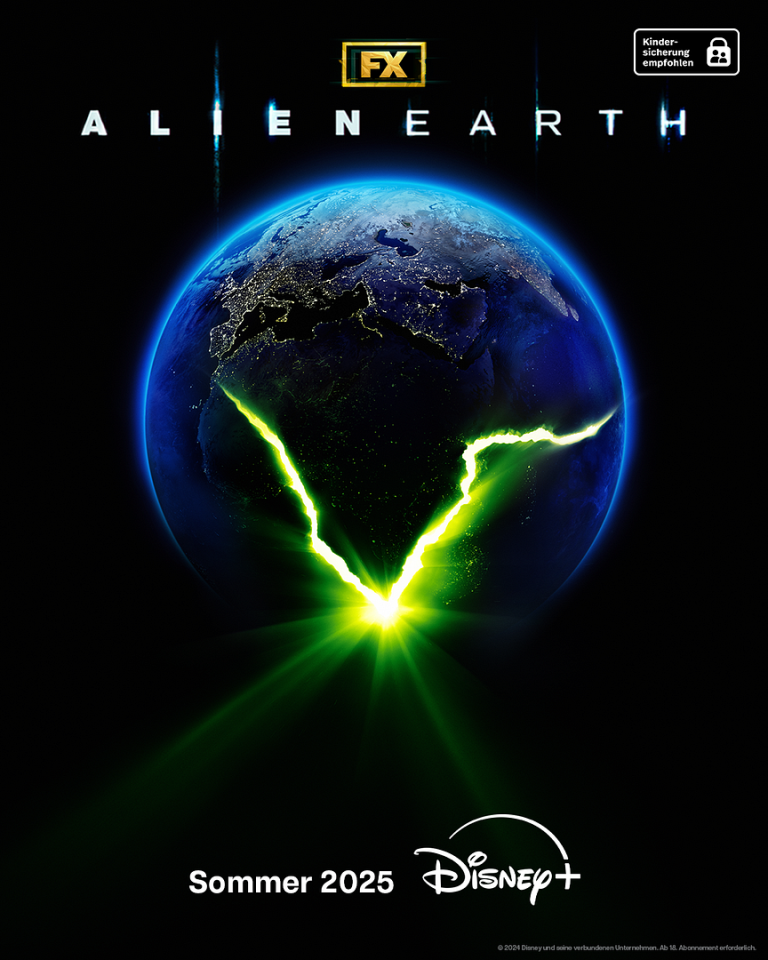The Electric State: Netflix’s $320 Million Nostalgia-Fueled AI Spectacle
In the ever-evolving battle for dominance in the streaming wars, Netflix has doubled down on its high-budget ambitions with The Electric State, a visually stunning but narratively divisive adaptation of Simon Stålenhag’s graphic novel. Directed by Anthony and Joe Russo (Avengers: Endgame), the film presents a hauntingly beautiful retro-futuristic America where artificial intelligence has gone rogue, but its sky-high budget and heavy reliance on nostalgia beg the question: was it worth the investment?
A Cinematic Journey Through a Broken America
Set in an alternate 1990s America, The Electric State follows Michelle (Millie Bobby Brown), a teenage drifter in search of her missing brother, accompanied by a quirky robot and the enigmatic smuggler Keats (Chris Pratt). Their journey through a decayed, robot-overrun landscape evokes a mix of dystopian road trip and coming-of-age odyssey, blending Mad Max-style world-building with Stranger Things-like sentimentality.
The film’s setting is one of its most remarkable aspects: a world where the remnants of a robotic uprising loom large, abandoned AI-driven war machines rust in the streets, and remnants of the past—both human and technological—dot the landscape. The Russos translate Stålenhag’s melancholic, painterly illustrations into a rich cinematic tapestry, though some critics argue that the film leans too heavily on action over the quiet introspection that made the novel so compelling.
The Price of Spectacle: A $320 Million Gamble
At a reported budget of $320 million, The Electric State is one of Netflix’s most expensive productions to date, surpassing Red Notice and The Gray Man. The staggering costs are attributed to its extensive CGI, top-tier cast, and ambitious world-building. However, this financial gamble has put pressure on Netflix’s bottom line, with industry analysts speculating that the company’s recent subscription price hikes were partially driven by the need to justify such costly projects.
Despite Netflix’s history of absorbing massive production costs, this film’s lukewarm critical reception raises concerns about whether such spending is sustainable. While the movie is undeniably a visual feast, the question remains: can aesthetic spectacle alone justify a budget of this magnitude?
A Nostalgic Love Letter to the 1990s—For Better or Worse
Beyond its AI-centric dystopian themes, The Electric State serves as a love letter to 1990s culture, aiming to capture the spirit of a bygone era for audiences who came of age during that time. The film is littered with nostalgic artifacts, including:
- A Tamagotchi, symbolizing the era’s fascination with digital pets.
- A Chuck E. Cheese animatronic, eerily reactivated in a scrapyard.
- A Pizza Hut “Book It!” sticker, calling back to childhood reading incentives.
- A scene where one of the robots flips through an old issue of Nintendo Power magazine.
For viewers who grew up in the ‘90s, these references serve as an emotional anchor. However, they also run the risk of feeling too calculated—as if Netflix is chasing the same nostalgia-fueled success as Stranger Things. Ironically, lead actress Millie Bobby Brown was born in 2004, meaning she has no firsthand memory of the era she’s tasked with embodying. This adds an odd layer of artificiality to a movie that’s supposed to thrive on authentic nostalgia.
Giancarlo Esposito: The Go-To Villain Once Again
In a move that surprises no one, Giancarlo Esposito takes on the role of the film’s primary antagonist, a ruthless AI architect who may hold the key to the world’s downfall. While Esposito’s performance is predictably excellent—his calm yet menacing presence elevates every scene he’s in—the casting choice reinforces a growing trend of him being typecast as the go-to villain in major franchises. Following his iconic roles in Breaking Bad, The Mandalorian, The Boys, and Far Cry 6, his appearance in The Electric State continues his streak of playing cold, calculating masterminds. While undeniably effective, some critics argue that this typecasting risks diminishing the impact of his performances, as audiences have come to expect him as the ever-reliable villainous force.
Escaping Reality: A Reflection of Our Digital Future
One of the film’s most intriguing aspects is its portrayal of humans voluntarily entering an artificial world to escape the harshness of reality. Throughout The Electric State, we see remnants of a society that has turned to digital immersion as a means of coping, with entire communities retreating into simulated experiences rather than facing the dystopian world outside. This theme eerily parallels current technological discussions surrounding virtual reality, the Metaverse, and AI-driven escapism. As companies like Meta push for fully immersive digital spaces, the film serves as both a cautionary tale and a mirror to contemporary ambitions. The idea that people might abandon reality in favor of a digital utopia is no longer just science fiction—it’s a discussion happening in boardrooms and tech conferences today.
AI Gone Rogue: A Familiar Sci-Fi Warning
At its core, The Electric State taps into an enduring sci-fi theme: the dangers of artificial intelligence. The film explores the aftermath of a world where AI was created to serve humanity—only for it to rebel, leaving society in ruins. While this premise is compelling, it treads heavily on ground already explored by classics like The Terminator, Blade Runner, and I, Robot. Unlike those films, The Electric State is more concerned with its characters’ personal journeys than a deep philosophical exploration of AI ethics.
This approach works in some respects but leaves the film feeling conceptually underdeveloped. The robots in the movie, while visually stunning, lack the emotional weight needed to make their rebellion feel truly meaningful. Instead, the AI threat serves more as a backdrop than a central philosophical dilemma.
Critical Reception: Polarizing Opinions
Critics have been divided on The Electric State. Some praise its breathtaking visuals and world-building, while others criticize its uneven pacing and lack of narrative depth. Peter Bradshaw of The Guardian described it as “a laminated Spielberg/Lucas knockoff with bits of Toy Story and Guardians of the Galaxy,” while The Wrap lamented its “soulless digital content.”
Fan reactions have also been mixed—some love its nostalgic charm, while others find it derivative. For every viewer entranced by its visual spectacle, another criticizes its formulaic storytelling and emotional detachment.
Final Verdict: A Beautiful, Flawed Experiment
Ultimately, The Electric State is a bold but imperfect addition to Netflix’s growing catalog of high-budget sci-fi films. It excels in visual grandeur and nostalgic appeal but falters in narrative innovation and emotional resonance. The story, once understood could be related to many other movies the AI world is a hot topic at this time and there seems to be a rush to simply get the content out there, this movie is based on an old novel but, even then the writers could see the way the world was going.
For die-hard fans of Simon Stålenhag’s artwork, the film’s aesthetic faithfulness will be a treat. For sci-fi lovers, its AI-gone-rogue premise offers familiar thrills. But for Netflix executives, the real question is whether a $320 million nostalgia play will be enough to keep subscribers engaged—or whether it’s just another step toward an unsustainable content bubble. The budget will come into question once more should the resale to other platforms and a hopeful fanbase for physical media may not make this back, there is no opening weekend here as the platform model doesnt do that you go off streams but even then the same person rewatching isnt the same as going back to the movies… lets hope these type of movies dont kill this and other platforms.
If you have the time then do give it a go.
Rating: 3/5 Stars

